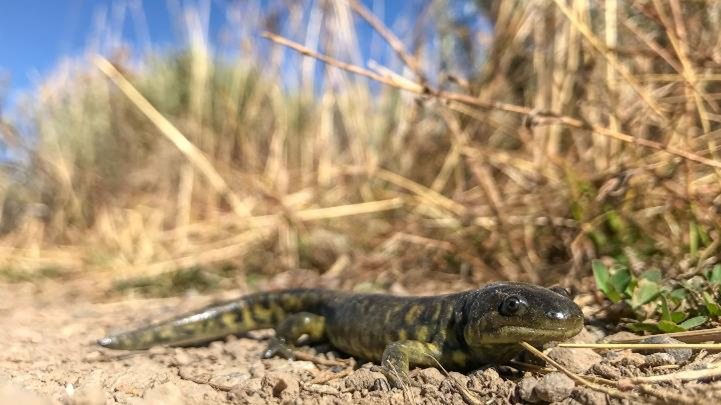Order: Urodela

Looking like lizards, but cousins of frogs and other amphibians, salamanders are often overlooked animals that seem to go about their lives content and wearing a smile.
Habitat
Look for salamanders where it is wet. Wetlands, lakes, and rivers, but also under logs and rocks in forests and fields, particularly across the northern parts of the world.
Food
Salamanders are predators and feed on prey of a reasonable size to their own. Insects, worms, and spiders, but also fish, other amphibians, and even small mammals, for some larger salamanders.
Behaviour
In places like Canada, salamanders lay eggs in the water. As with other amphibians, they hatch into tadpoles that do not resemble the adults until they go through several stages of change. They only live under water through this time. Once adults, most can live both in water, breathing through their skin, and on land, breathing through their lungs. However, some species only live underwater as adults, retaining gills to breathe. A quick flick of the tongue helps salamanders catch their prey. Despite their somewhat slow movement, they have a mucus on their damp skin that makes them hard to grasp and may have an offensive taste. If particularly threatened, they can sacrifice their tail and then grow a new one. They must hibernate through winter, surviving underwater.
Conservation
Some salamander species are at risk. The Western Tiger Salamander, for example, faces threats from changes in agricultural practices, oil and gas development, and urbanization. These lead to habitat loss, degradation, and fragmentation across its range. Local populations can also be affected by road crossings and fish stocking in otherwise fishless waters.

